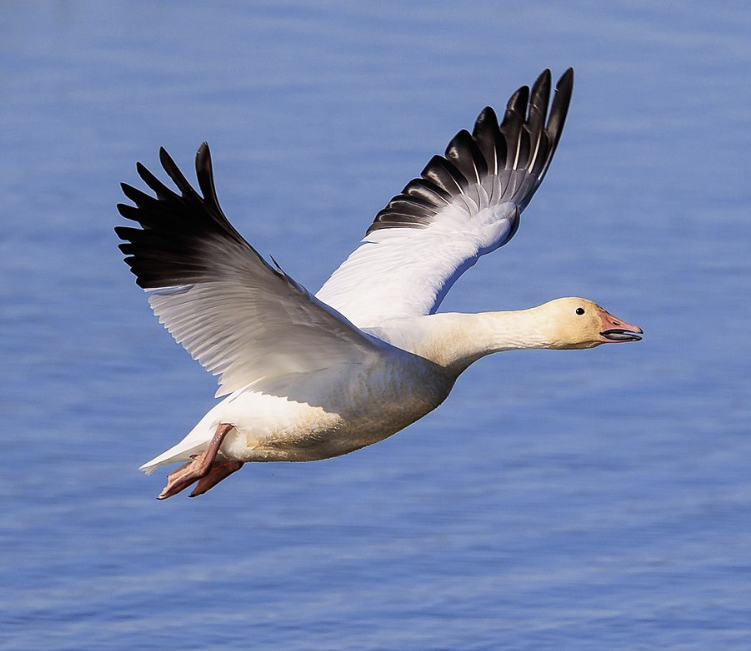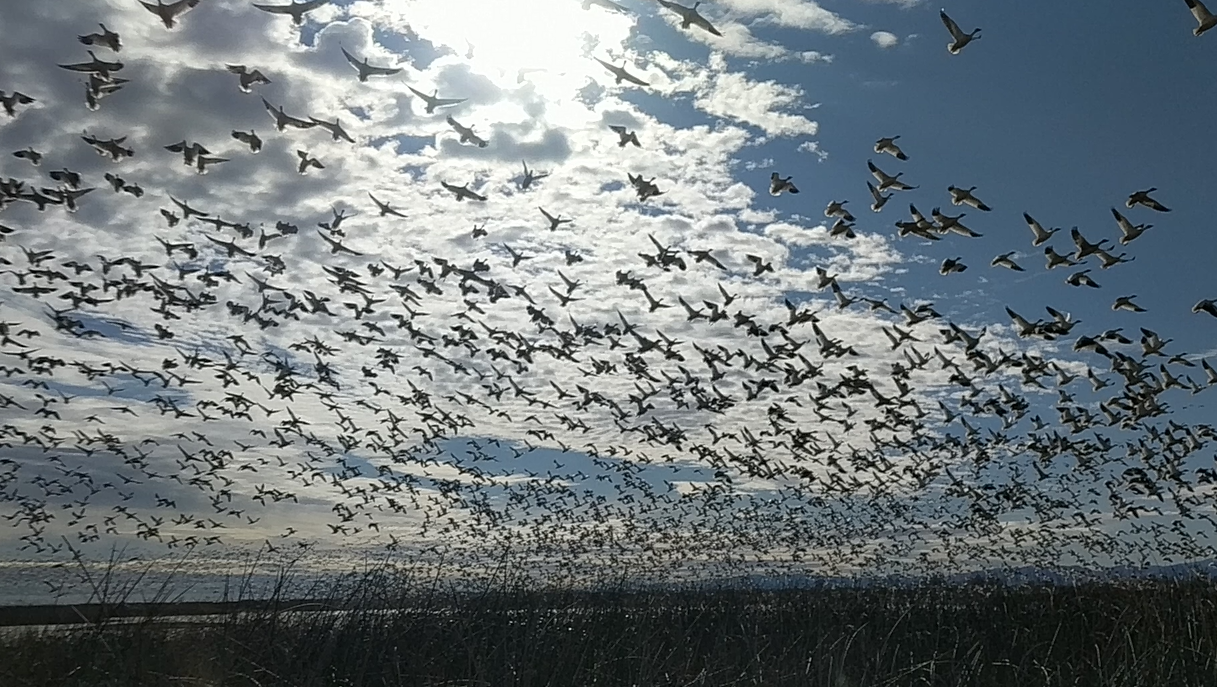Tuleyome’s Science Corner: Snow Geese

Snow goose in flight by Frank Schulenberg
In the Sacramento Valley, we are fortunate to have a year-round calendar of natural wonders to enjoy. One of the highlights of the winter season for me is an annual pilgrimage up I-5 to visit the Sacramento National Wildlife Refuge near Willows. SNWR is the winter home to hundreds of thousands of migratory birds, including huge numbers of snow geese. If you’re lucky enough to be on the auto tour route while a flock of snow geese takes off, be sure to roll your windows down to listen, as the din caused by thousands of hungry mouths and flapping black-tipped wings is truly unforgettable.

Flock of snow geese taking off from Sacramento National Wildlife Refuge by Geoff Benn
Snow geese ( Anser caerulescens ) are a medium-sized species of goose that can be found in great numbers in certain parts of North America. They are migratory birds that breed during the summer months in the far northern reaches of Alaska, Canada, and Greenland, and then travel south to the continental US and Mexico for the winter months. The species is split into two subspecies, based on geography – the lesser snow goose winters in Mexico and the western and central US, whereas the greater snow goose winters along the Atlantic coast of the US.
Wintering grounds are not just a place to find food during the cold months – they’re also where snow geese find their mates. Snow geese mate for life and typically choose their partners during their third or fourth winters. Each year in the early spring, the pairs will return to the same area of the far north where the female was hatched to build their own nest.
Historically, snow geese are believed to have relied on wetlands in their wintering grounds for food, but most now derive the bulk of their winter nutrition from leftover grain in farm fields. The great abundance of this food source led to a significant increase in the population of snow geese in the second half of the 20th century, going from as little as a few thousand individuals in 1900 to over 5 million today. This dramatic population increase resulted in significant damage to vegetation in the winter nesting grounds of snow geese, posing a threat to other species that use these same areas. To counter this danger, increased snow goose hunting quotas were implemented in the late 1990s. Populations have since stabilized, though still at a higher level than desired by wildlife managers. The short-term outlook is thus very good for snow geese, though climate change may pose significant challenges in the future, with a predicted loss of 73% of their range under a +2.0C global warming scenario.
If you’d like to see the snow geese for yourself, the best time to see large numbers of them at SNWR is from November through early March. It’s a great way to get outside and enjoy nature when hiking trails are muddy or covered in snow.
-Geoff Benn gbenn@tuleyome.org
Tuleyome Education Associate
Looking for more articles like this? Click the hashtag below!
RECENT ARTICLES






